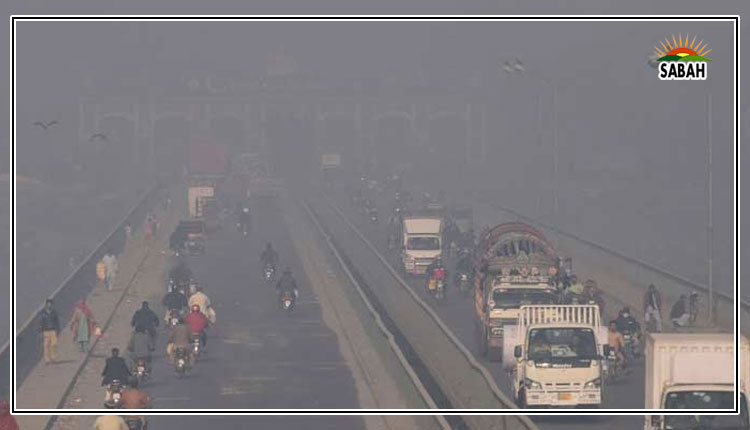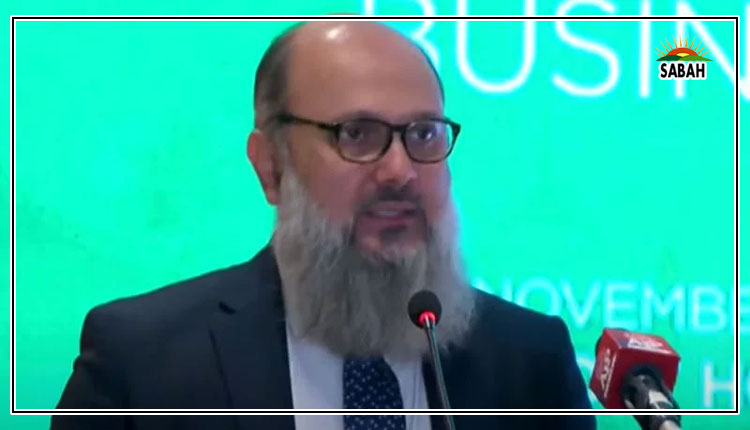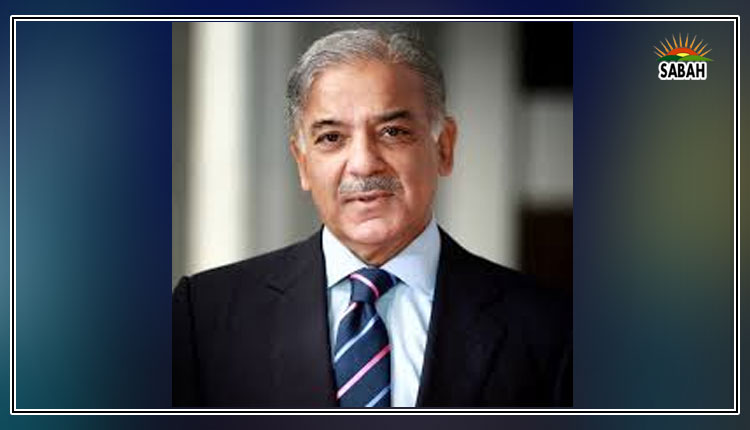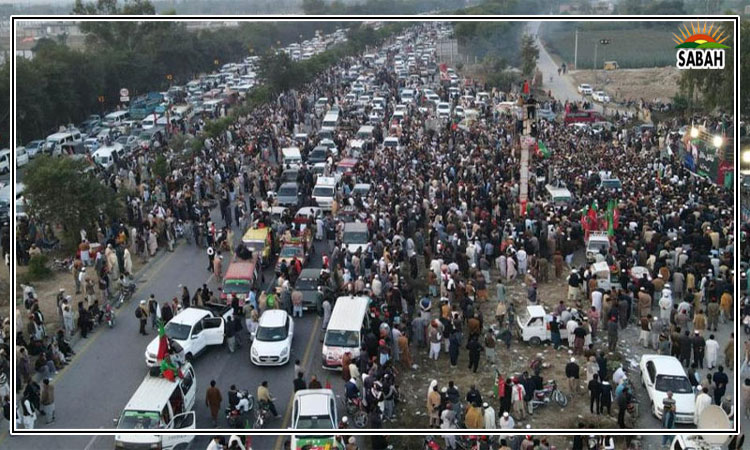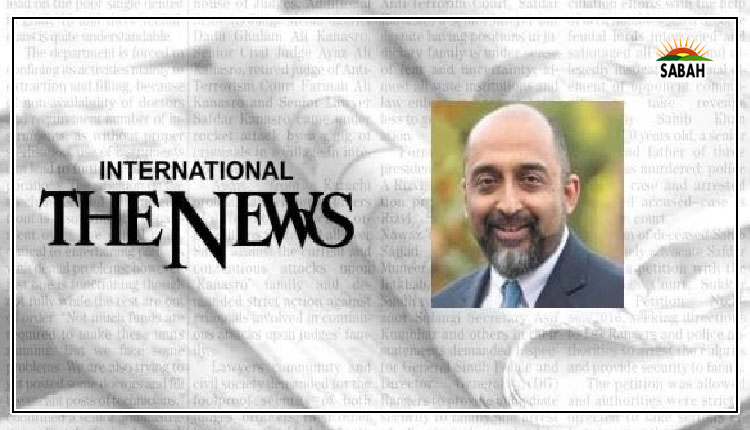Costs of calcification۔۔۔Mosharraf Zaidi
If you dont understand something you cannot change it. Pakistanis are constantly bombarded with news that prompts a sense of utter helplessness and a feeling that state and society are failing.
The incident in Ichhra, the deliberate suspension of the election results reporting system on the evening of February 8, counterterrorism and counter-radicalism, macroeconomic stability, routine immunization, literacy, financial inclusion you name it: it’s either breaking or broken. The systems, processes, mechanisms and institutions that Pakistanis need are not working. This sense of doom is not unfounded.
Among the many downsides of having a calcified decision-making elite one that is completely cocooned from ordinariness or normalcy is that decision-making is unlikely to reflect a granular awareness or understanding of what the folks in Pindi love to call ground realities.
Sponsored Content
Long Week? Revive with a Massage (25% Off) – Unwind Today
Long Week? Revive with a Massage (25% Off) – Unwind Today
Indulge in a soothing massage session at our top-rated spa. Book now!
Massage
Master IT Skills, Boost Your Salary (Explore Courses)
Master IT Skills, Boost Your Salary (Explore Courses)
IT Courses | Search Ads
IT Courses
Islamabad: Unsold Furniture Liquidation 2023 (Prices May Surprise You)
Islamabad: Unsold Furniture Liquidation 2023 (Prices May Surprise You)
Furniture Deals
Pakistani decision-making has another additional layer of disability (well, it has many). Decision-makers in the political realm are all in their seventies (except former president Zardari, who is a sprightly 68). The young Imran Khan is 71. The former prime minister Sharif brothers are 74 and 72 respectively. Senior judges are all in their late fifties and early sixties. Senior bureaucrats are largely the same as senior generals in their mid to late fifties. The overwhelming number of these roles are held by men.
When this decision-making core of the country is confronted with the same information that all of us are, their understandable reaction is to look back at when the country was less dysfunctional and more capable. For most of todays decision-makers, this memory winds back to the late 1990s (or, in the case of General Musharraf romantics, the early 2000s).
So far so good in the sense that all of this is understandable. But it starts getting tricky right about now.
In 1998, former prime minister Shehbaz Sharif was the chief minister of Punjab. Back then, when there was a problem in Lahore, he used to rely on four key assistant commissioners to solve it. All four of those civil servants went on to become very effective and well-regarded civil servants. In 1998, then-chief minister Sharif would literally press a button, and within minutes, instructions would flow from him to one of his key assistant commissioners, and then onward to the relevant executor of instructions. If the problem was outside Lahore, the pathway would be slightly different; it would go through two or three deputy secretaries who managed his office, but the effect was largely the same. Almost instant responsiveness.
In 1998, Lahore had a population of about five million. Pakistan had a population of 130 million back then. Today, Pakistan has almost doubled in size (up to 240 million), and Lahore has almost tripled (at nearly 15 million). So the obvious, linear solution lets say for whoever is running Punjab and interested in fixing Lahores problems might be to triple the number of assistant commissioners for Lahore.
This is a silly solution (for reasons I will delineate below), but ironically, even the most simplistic solutions have not been tried. Pakistans civil service cadres have grown since 1998, but their rate of growth, especially in urban areas and especially in highly sensitive domains (like district administration, policing, and local intelligence) has been dramatically lower than population growth.
The problem here (and the problem the PML-N and PPP have been facing for over a decade now, and the problem these parties faced on February 8) is that a dramatic increase in population is not a linear proposition. Pakistan did not grow from 130 million to 240 million by just adding a bunch of numbers. Lahore didnt triple in size or complexity it tripled in terms of the number of people breathing, the number of people defecating, the number of people getting married (and divorced), and the number of people trying to get from one place to another.
For a major vector or indicator, the size of Lahore tripled, but this means that the cumulative effect of a tripling of the population of Lahore is that a high number of things happening has essentially tripled not just the one thing (of people being born). This means that the network effect of a doubling (countrywide) or tripling (in Lahore) of the population is not a tripling of everything across the board but a much larger quantum of change.
Lahore is a good example of what has happened to Pakistan because, in addition to population or demography, it also manifests the other major and obvious change that has occurred in the country: urbanization. Large swathes of what used to be treated as rural are still treated as rural or at a minimum, non-urban. But large swathes of Lahore and the cities around Lahore are in fact urban centers and in many ways, Lahore has begun to signify the clustering nature of urban growth so that Lahore is at the heart of a rapidly emerging cluster of urban centers. It is, despite lacking many facets of what a megalopolis is, a supercity. A supercity run with a system designed for a small town.
Fast forward from 1998 to the 2008-2018 era, and the then chief minister Shehbaz Sharif used largely the same suite of tools: increasing the number of key people that worked with him; the roster of deputy secretaries managing the CM office grew from two or three in 1998 to nearly a dozen in 2008. A whole new generation of civil servants who could execute instructions quickly was trained during this period. The most celebrated (and demonized) of the critical paths adopted during this period was the Lahore Metro, which took less than 11 months to build, from start to finish. The reward for the two civil servants who helped deliver that game-changing and high-value project? Accusations of corruption (never proven) and lengthy and traumatizing periods spent under incarceration.
When Covid-19 struck, the federal government sought to get basic health data from the big hospitals around the country. The administrators running cities like Lahore dont know where their jurisdiction begins and the health secretarys jurisdiction ends, and the secretaries for health often dont know where their own jurisdiction ends, and hospital administrators and doctors begin.
The result was that the prime minister and key cabinet members in Islamabad could not get basic hospital data from even the large cities. Thats partly when the military got involved, and mid to senior level serving military personnel began to try to collate key indicators from large hospitals. The resulting NCOC structure was an impressive way to deal with Covid-19 in 2018 just like building the Lahore Metro was an impressive way to deliver hardcore infrastructure in 2011, and just like getting DMG officers to work with army officers and jawans to clean up canal linings across Punjab was in 1998.
What was impressive in each case was not the mere fact that it could do those things very fast, with very short turnaround times. In retrospect, it was that the government was doing those things at all.
When Pakistans calcified decision-making elite think of problem-solving and fixing the system and reform, they are not thinking of a rebuild and retool that will equip Pakistan to deal with 2047 or even 2030 or frankly, even 2024. They are thinking of how the system can become as good as it was when it was capable of delivering one-off successes in 1998 or 2008.
People like me have celebrated those one-offs in the moment, and across time and space because even on-off delivery has become so rare and distinctive. But make no mistake, double-digit inflation each month, a mob wanting to lynch a woman in Ichraa, climate-induced rural-to-urban migration, contaminated water, uncertain and vulnerable food supply chains, global lows in labour force participation rates, global highs in illiteracy, and in cross-class, cross-sectional malnutrition these are not problems that can be tackled in a system that celebrates one-off public administration wins.
Pakistans decision-making elite has neither the language, nor the people, nor the fundamental awareness of the interconnectedness and mutually reinforcing nature of the problems Pakistanis contend with every day. An expectation of reform from a decision-making elite that is not even aware of what problems need solving and why reform is necessary is to live in a fools paradise. The tragedy is this is no paradise. May Allah protect and guide Pakistans decision-makers.
Courtesy The News


